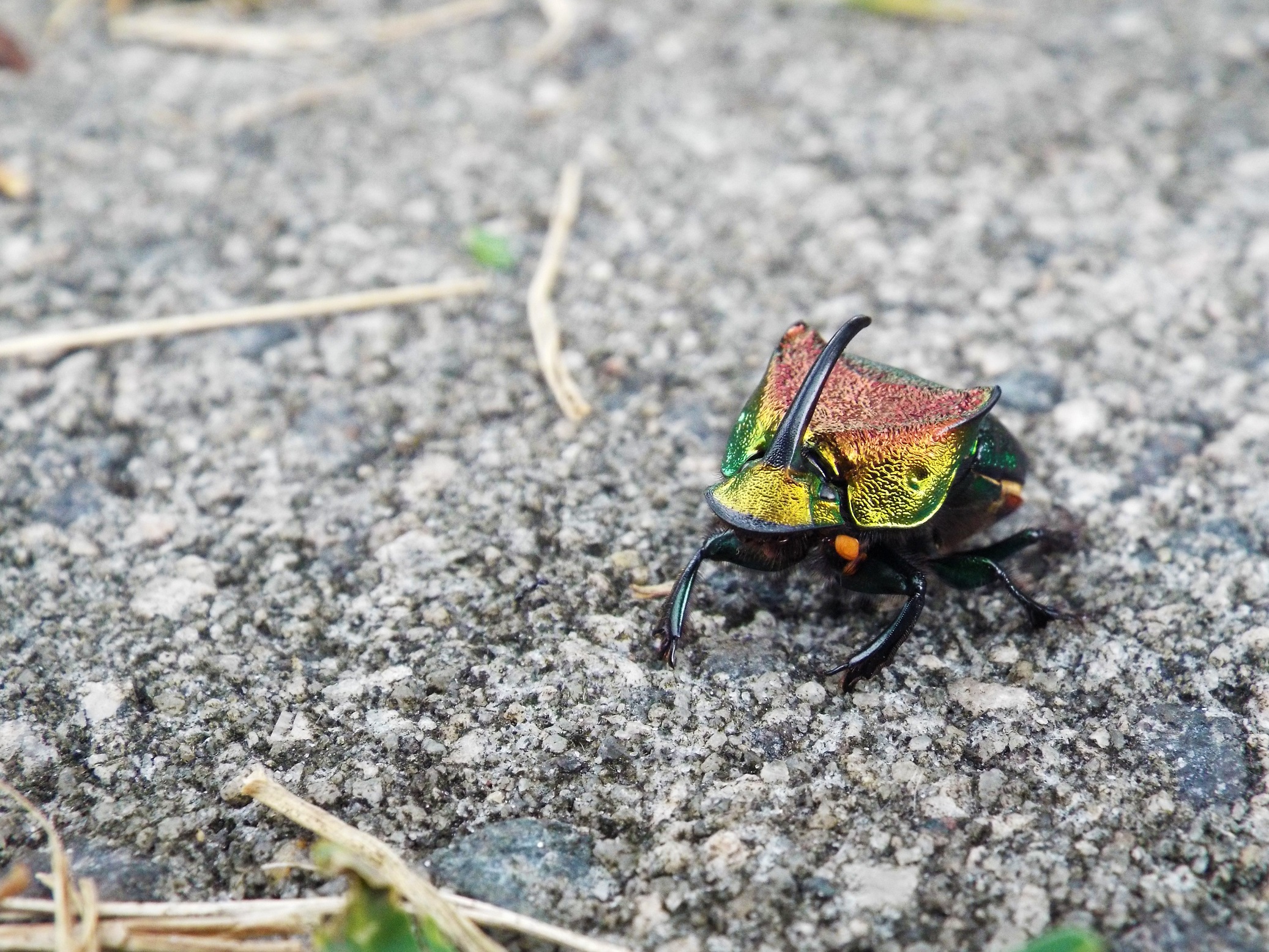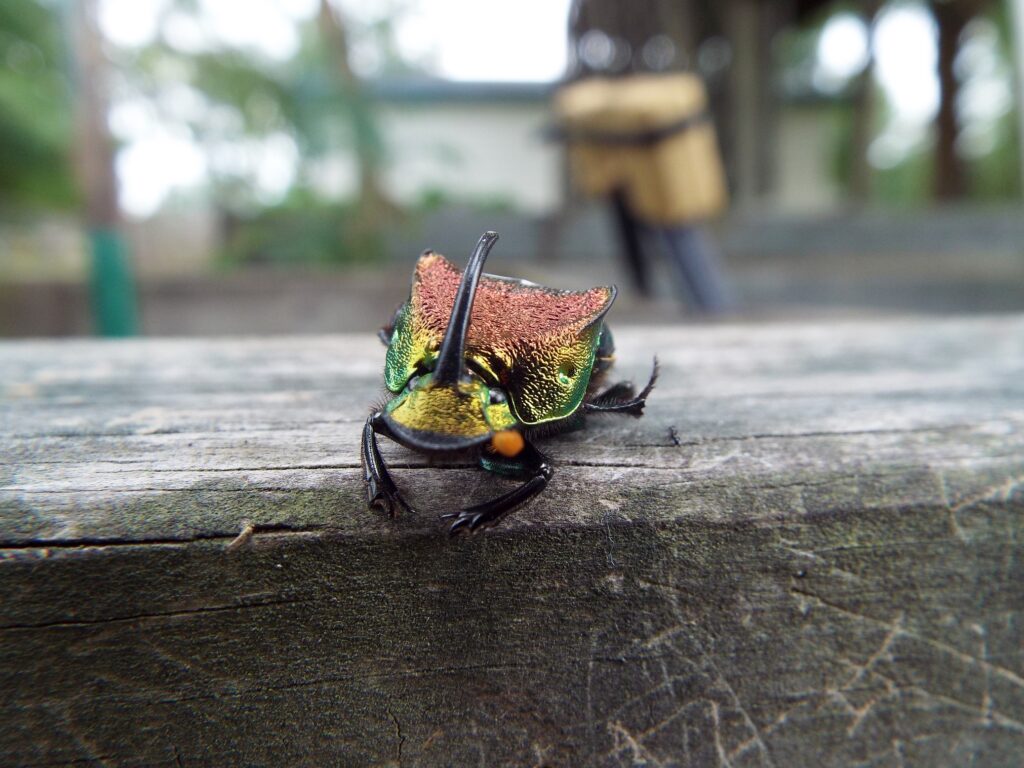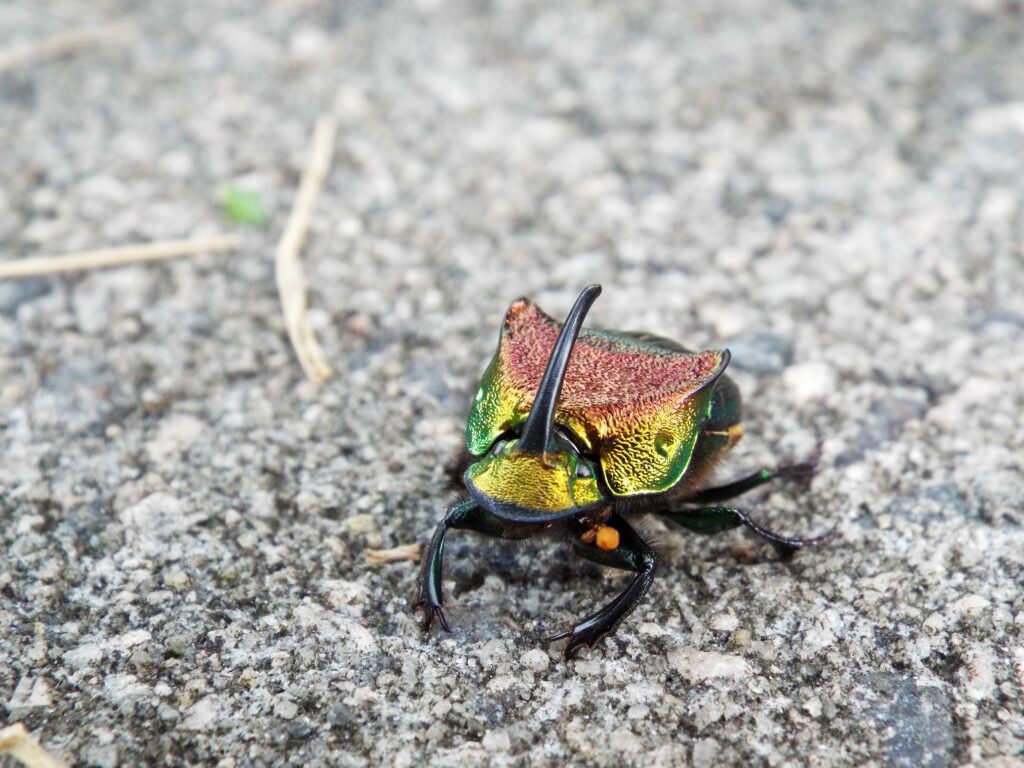


This week for Flora and Fauna Friday I present the prismatic metallic beetle that picks up after your pets, the Rainbow Scarab Beetle (Phanaeus vindex).
The Rainbow Scarab Beetle is an acorn-sized beetle, at about half to three-quarters of an inch, with an overall blocky appearance. It has a heavily textured exoskeleton on the thorax and head, reminiscent of crumbled aluminum foil, as well as ridges running down its elytra, the wing plates. What sets the Rainbow Scarab Beetle apart from the rest, as you may have surmised from the name, is its carapace of many colors. This Beetle has the sheen of heat-treated Titanium. Their black underside plays the backdrop for their rainbow top. Their head and the sides of their thorax are an iridescent brass that shifts to emerald-green, the mantle of their thorax gleams of garnet with hints of amethyst, and their eleytra shine of apatite beset by emerald and brass. If that’s not enough to distinguish this beetle, the males possess a mammoth black horn on their head and a broad triangular plateau on their thorax. Now that’s a handsome bug!
What’s not so handsome is their dietary habits. Rainbow Scarab Beetles are Dung Beetles, a group of Beetles that feed exclusively on animal waste. Both the adults and larvae of this species feed on the same thing. A male and female Scarab will meet each other over dinner. If they hit it off, they’ll each construct a burrow beneath the feast, to act as both cradle and pantry for their offspring. Eggs are laid within these subterranean deposits where their larvae will grow and emerge the following year. Although this habit is unsavory, these colorful critters play an important role in our ecosystems. They are one of many small cogs necessary for healthy nutrient cycling in the environment. When a plant draws nutrients from the soil and an animal eats that plant, those nutrients are transferred into the animal and away from the soil. The excess that is discarded by that animal returns to the soil but, without the help of Dung Beetles, it would either be consumed and dispersed again by flies or remain in the top soil were it can easily be washed away by rainwater runoff. Runoff from animal waste into river systems is a huge concern for water quality, even here on Edisto Island. Dung Beetles help to sequester this waste by burying it deep in the soil. This prevents nutrient runoff. Additionally, it helps to improve soil quality by moving nutrients below the topsoil and reducing soil compaction from the burrowing action of the Beetles.